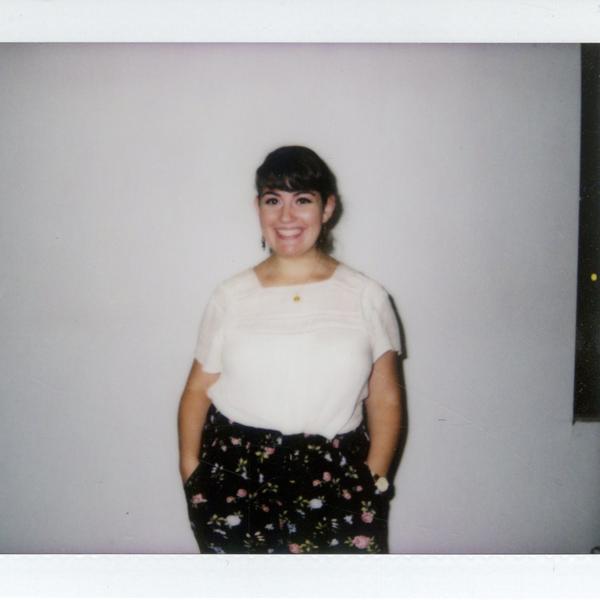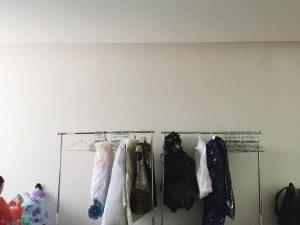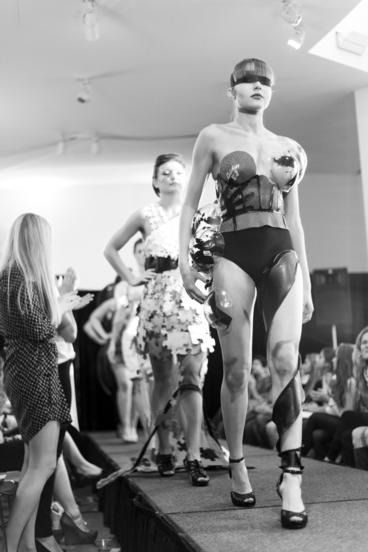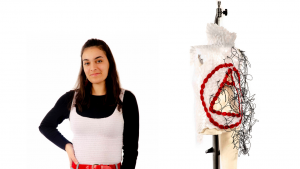FEATURED ESSAY
This week, the Weisman hosted our annual design showcase, this year titled Imprints. Every year the designers in the showcase are assigned an exhibition up at WAM from which to draw inspiration. This year, the designers explored the question of how we present ourselves in the world, in relation to WAM’s exhibition “The Talking Cure” by Melissa Stern and featured artwork “What Needs to Be Said?” by Rebecca Krinke.
Throughout the history of art, the thematic ideas of various movements transcend mediums. For example, Picasso’s cubist works include paintings, sculptures, collages, and costume designs.
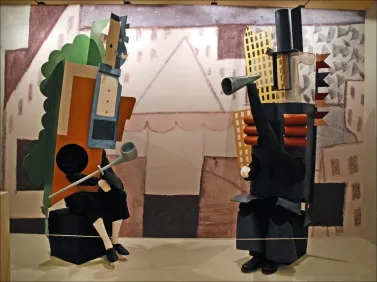
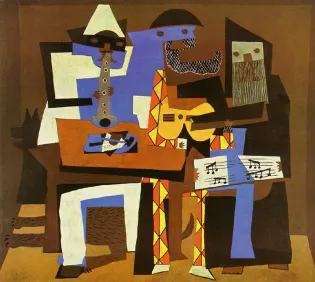
In addition, motifs from Expressionism manifest themselves in cinema, music, literature, theater, as well as the visual arts.
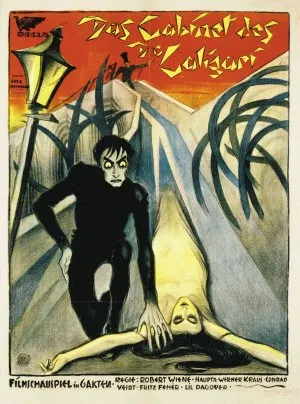
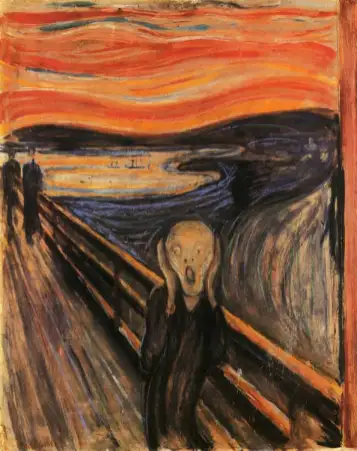
Even today, we see popular culture figures like Kanye West create across multiple forms of media, ranging from music to fashion design. When thinking about various mediums as vehicles for expression, it is interesting to consider how moods and ideas manifest in different forms, and how the history of art plays into our reception of these types of media.
This Vogue article highlights some of the best art-inspired pieces of the spring 2017 runway, such as Valentino designer Pierpaolo Piccioli, who curated a collection inspired by medieval art inspired by Hieronymus Bosch.
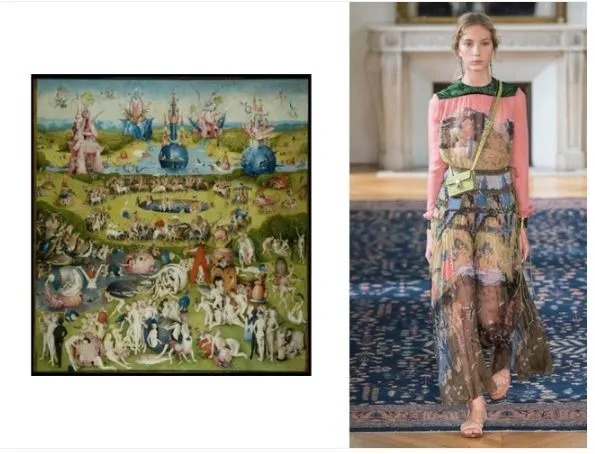
Or Mary Katrantzou, who used Hellenistic pottery and psychedelic motifs to generate her spring line.
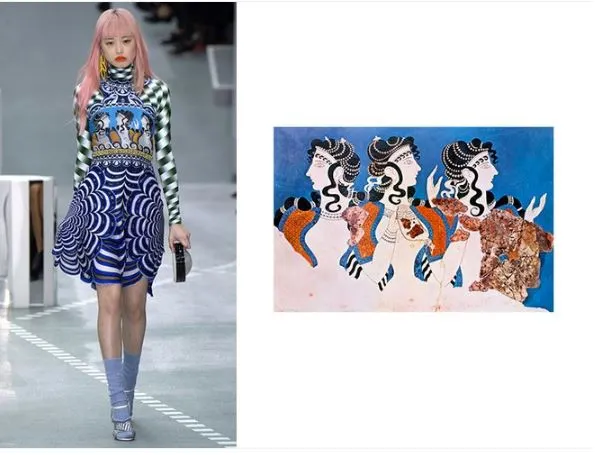
Louis Vuitton just announced their ‘Masters’ series, a partnership with contemporary artist Jeff Koons, which consists famous art image transposed onto handbags. Whereas other pieces highlighted draw inspiration from lauded works of art, here we can see where specific works and the artists that created them move into the realm of iconography.
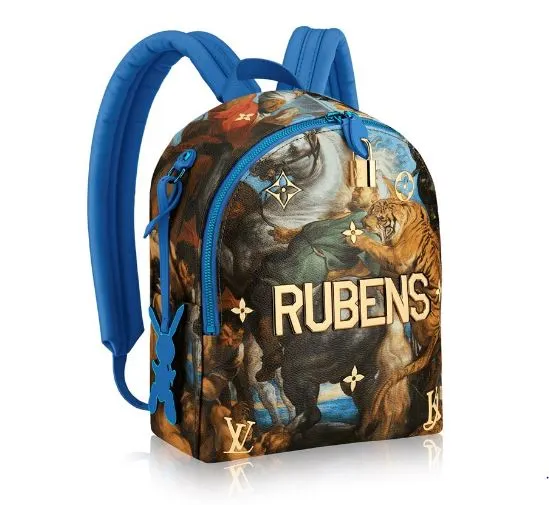
Gucci is also known for their use of art inspired fashion, and designer Alessandro Michele recently generated a partnership with multiple artists, photographers, and meme creators (apparently that’s a job) to develop art-inspired memes to serve advertisements for their new line of watches. The image below is the result of a partnership between photographer Benjamin Langford and meme artist Derek Lucas (@champagneemojis).
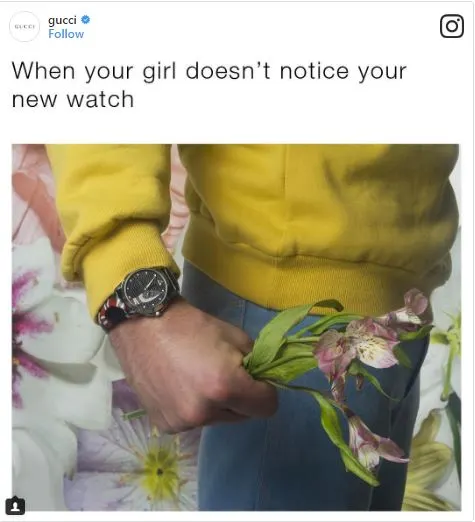
This fire meme was created by Qatar-based visual artistic duo Christto & Andrew.
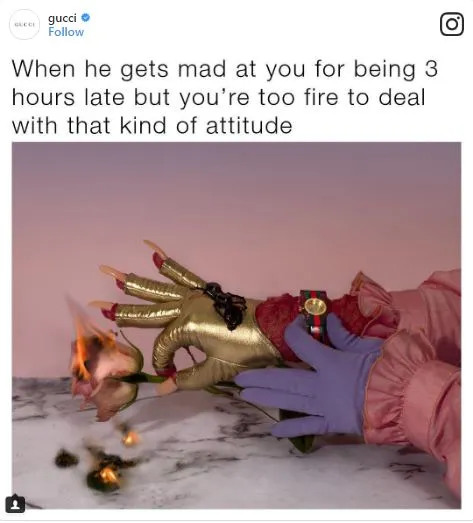
Launched on Instagram (@gucci) and centered around the theme The Feel When Gucci (#TFWGucci), each meme (there are 55 total) draws attention to a different aspect of the collection. This modern collaboration between fashion, graphic design, and artists strengthens the bond between creative industries. In addition, the use of a meme as a mode of art and advertisement speaks volumes to this idea of the artwork as a form of an icon. Made up of both words and images, there is almost always an element of repetition to memes, whether it be the duplicated phrase or visual, which works to create a mood that transcends multiple settings.
This idea is the basis for almost all of the clothing produced by the Tumblr artist Fly Art Productions, who puts hip hop lyrics on famous works of art (essentially creating a meme), which are also sold on various forms of clothing.
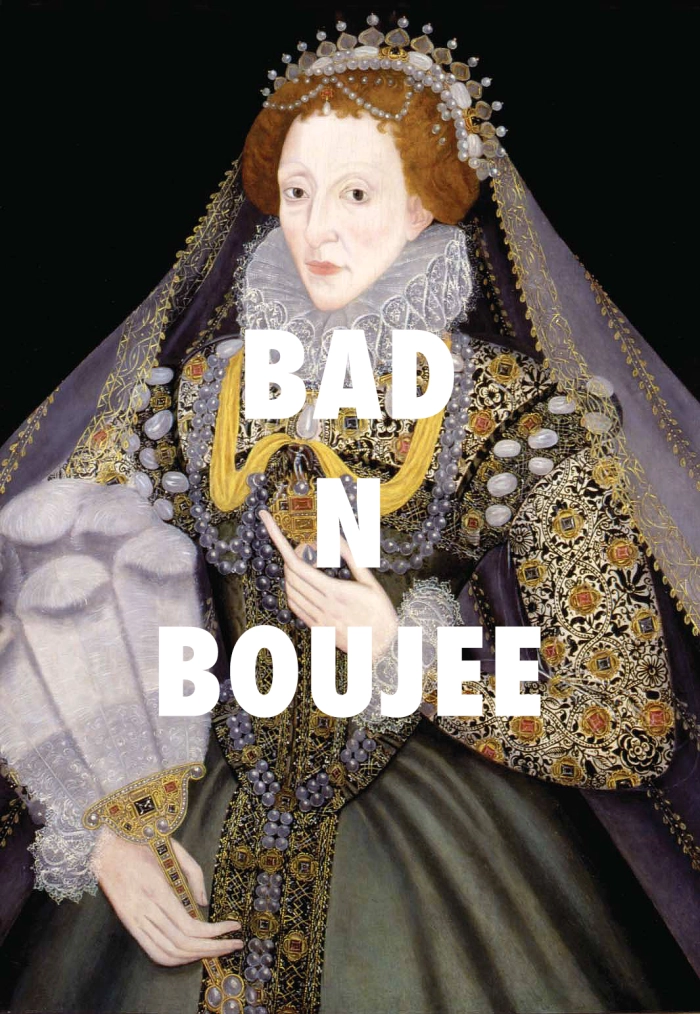
When juxtaposing images of art with hip hop lyrics, both the lyrics and the artwork is decontextualized. The use of popular lyrics in combination with fine art helps make these works appeal to a larger audience— people have seen these paintings before and they’ve heard the lyrics, so it’s neat to see these two unlikely things put together— it’s kind of like being part of a cool inner circle, a feeling that is not often elicited when people without art historical backgrounds engage with art.
Here, the image again manifests as an icon. Using music, or other forms of popular culture as a lens or point of reference through which we view past forms of art can elicit new insights. We will never see art made in previous centuries the same way the artist and original intended audience did because we aren’t the same— but that doesn’t mean that these works of art no longer provide us with any form of cultural value. If history has shown use anything, themes expressed through art will continue to transcend movements, mediums, and time.
Gina Watylyk
Gina Watylyk is a senior majoring in Technical Writing and Communication and minoring in Chemistry and Art History. She works as an editor and account executive at CLAgency, as a community advisor in Pioneer Hall, and as an office assistant in Frontier Hall. In her free time, Gina can be found going to concerts, riding her bike, eating brunch, or thinking about memes. Gina’s goal in life is to try as many ice cream flavors as possible.
